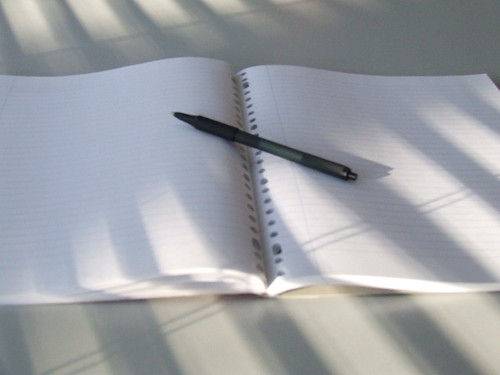
You know what happened, so I won’t go into detail. Instead, let’s focus on a few ways to get words on the page (or the screen) even when it seems we’d rather do almost anything else. For many writers, the trick is to get started, because once we get started, there’s no stopping us!
If you are having trouble getting started with your writing, try one (or more) of these seven strategies to overcome your writer's block.
Strategy #1) Meditate for five minutes
As soon as you realize it is your writing time and you are not writing, stop whatever you are doing, set a timer for five minutes and meditate. I am not an expert on meditation, but I can say that you don’t have to be to do a five-minute meditation. Simply set a timer for five minutes, close your eyes, and focus on your breathing for five minutes. Pay attention to the thoughts that come to your mind, and bid them farewell as you focus on your breathing. I find it easy to bid thoughts farewell as I breathe out, as it feels cleansing.Strategy #2) Cut off the Internet.
Unplug. Open up your Word Processing program. Don’t allow yourself to turn it back on until you have 500 new words on the page. The Internet can be an amazing tool. However, no matter what writing project you are working on, once you have your document in front of you, I am sure there is something you can do to move the document forward without the Internet.Strategy #3) Call a friend.
Tell her you are having trouble writing, but promise to spend the next 60 minutes writing. Ask her to call you back in 60 minutes to tell her how many words you have written. It is amazing what accountability can do.Strategy #4) Do some exercise.
Do 100 jumping jacks or 20 pushups. Walk around the block. My personal favorite is to power up my Xbox and put on a zumba song. I rock out to one song, which takes just five minutes (and burns about 100 calories) and then get back to writing.Strategy #5) Go old school.
Turn off the computer. Pull out a pad of paper and a pen and get to writing. Draw figures to conceptualize your project. Write about why you don’t feel like writing. Write and think through a theoretical puzzle. Write up your methods section. Whatever you do, spend at least 20 minutes with a pen and paper and watch how your writing is reinvigorated.Strategy #6) Have a healthy snack.
Go to the kitchen. Grab an apple. Do something fancy to it, like peel it and cut it into pieces. Or, taken a mango and cut it restaurant-style. Do something methodical and creative with a healthy snack and then eat it. You will be amazed at how that little bit of left-brain activity and a sweet reward can fuel your writing.Strategy #7) Change your location.
If you are working on a laptop or with a pen and paper, move yourself to another room. If you work at a university, try going to the library or a study room. If you are at home, try out the dining room table or the living room. If you live in a studio, try facing a different window. Move yourself to a new location and tell yourself that this is your writing spot for the day.I hope one of these seven strategies works for you. I wouldn’t be surprised if you found it useful to work one or two of these strategies into your everyday writing routine.
Just imagine yourself getting up, preparing a quick, but artful breakfast, then meditating for five minutes, sitting down and writing for 30 minutes before getting up and doing 25 pushups and writing for another 30 minutes. What a rocking morning that would be!

Best of luck with your writing, and let me know which of these (or other) strategies help you move through writer’s block.
